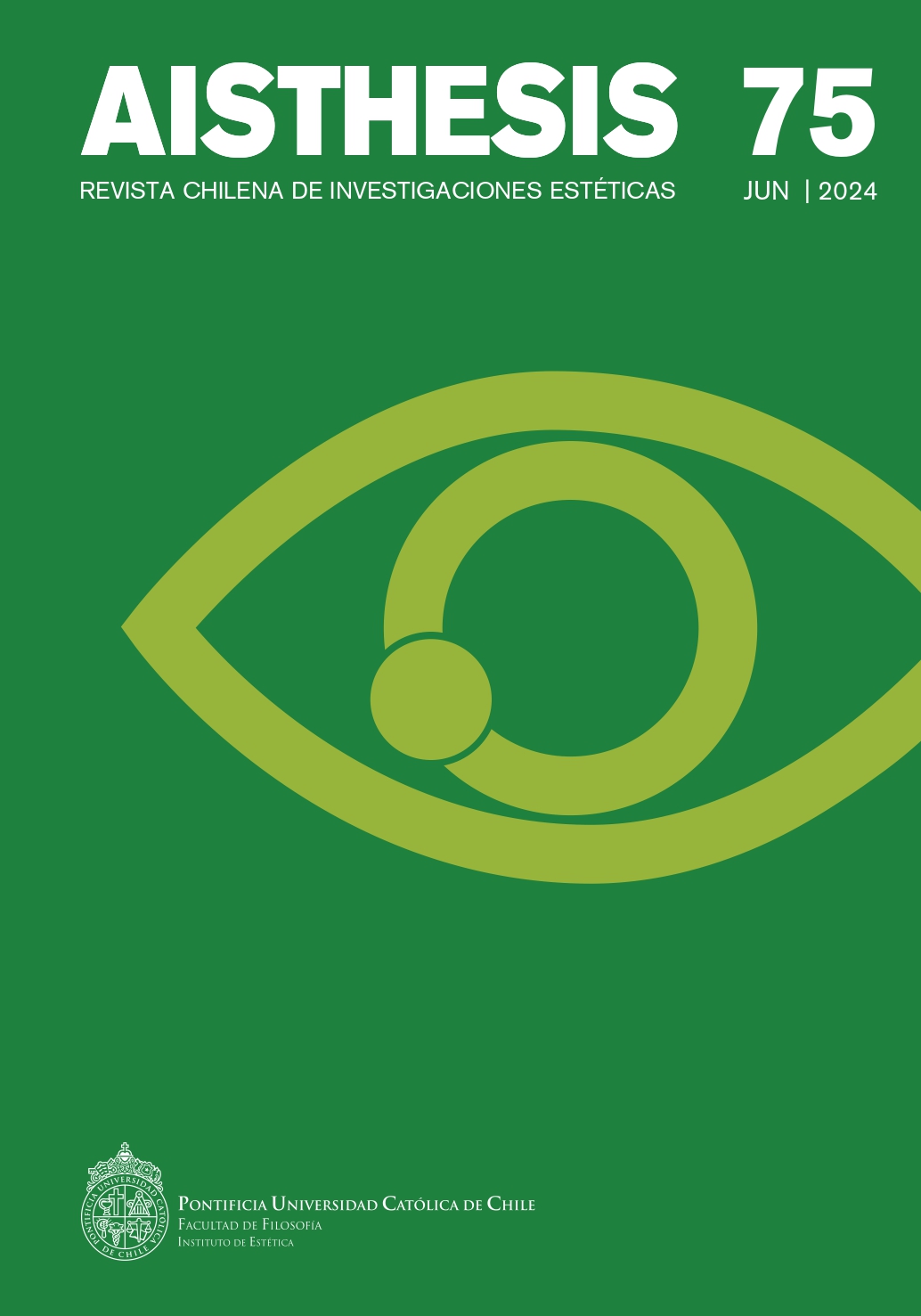Matrix Gaze and Dark Power of the Gaze
Main Article Content
Abstract
Derrida and Agamben propose the origin of art in a negativity: blindness in one case and the “being able to not do” in the other. This confluence allows me to propose the concept of dark power of the gaze to account for the inexhaustible and always open place of the gaze that is not exhausted in its historical achievements. Whit this I propose three things that base an aesthetic and political perspective of the gaze: 1. The gaze is a symbolic and matrix structure that organizes the ways of seeing of a culture or a society; 2. Historical ways of seeing are governed by dominant aesthetic and political forces of meaning that I call the matrix gaze; 3. Before the matrix gaze, forms of counter-gaze and dissident gazes persistently arise that advocate breaking their hegemonies and that define the transformation and dynamism of the gaze.
Downloads
Article Details

This work is licensed under a Creative Commons Attribution-NonCommercial-ShareAlike 4.0 International License.
All contents of this electronic edition are distributed under the Creative Commons license of "Attribución-shareAlike 4.0 Internacional" (CC-BY-SA). Any total or partial reproduction of the material must mention its origin.
The rights of academic works published in this publication belong to their authors., who grant to AISTHESIS: Revista Chilena de Investigaciones Estéticas the license for its use. The management of the permits and the authorization of the publication of the images (or of any material) that contains copyright and its consequent rights of reproduction in this publication is the sole responsibility of the authors of the articles
References
Referencias
Agamben, G. La comunidad que viene. Pre-Textos, 1997.
––. La potenza del pensiero. Neri Ponza editore, 2005.
––. «Bartleby o de la contingencia». Preferiría no hacerlo. Bartleby el escribiente de Herman Melville seguido de tres ensayos. Gilles Deleuze, Giorgio Agamben y José Luis Pardo. Pre-Textos, 2011.
––. La potencia del pensamiento. Adriana Hidalgo Editora, 2018.
––. Studiolo. Adriana Hidalgo Editora, 2021.
Belting, H. Florencia y Bagdad. Una historia de la mirada entre Oriente y Occidente. Akal / Estudios Visuales, 2012.
Brotton, J. A History of the World in Twelve Maps. Viking Press, 2012.
Butler, J. Marcos de guerra: las vidas lloradas. Paidós, 2010.
Derrida, J. Mémoires d’aveugle. L’autoportrait et autres ruines. Editions de la Réunion des Musées Nationaux, 1990.
––. Artes de lo visible (1979-2004). Eliago Ediciones, 2013.
Eco, U. Tratado de semiótica general. Debolsillo, Penguin Random House Grupo Editorial, 2018.
Klein, J. A Commentary on Plato's Meno. University of North Carolina Press, 1965.
Lizarazo, D. Iconos, figuraciones, sueños. Hermenéutica de las imágenes. Siglo XXI, 2004.
––. La fotografía y el otro. Cuerpo y estética de retorno. Secretaría de Cultura - Gobierno de México, Centro de la Imagen, 2022.
––. Hermenéuticas y esquirlas en la mirada cinematográfica. UAM - Gedisa, 2024.
Nancy, J. L. La comunidad desobrada. Arena Libros, 2001.
Wan, J. «Why Google Maps gets Africa wrong». The Guardian, 2 abr. 2014. https://www.theguardian.com/world/2014/apr/02/google-maps-gets-africa-wrong
